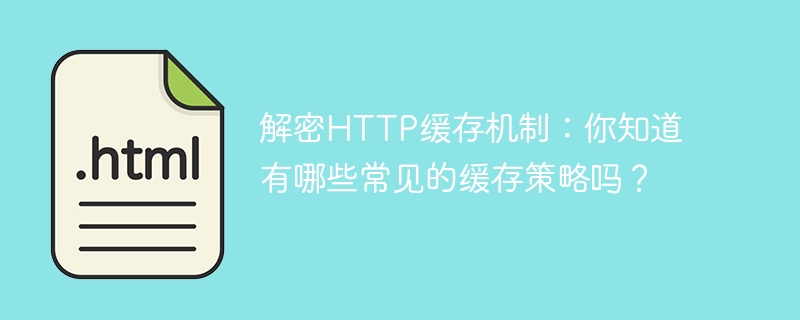

Decrypt HTTP caching mechanism: Do you know what common caching strategies are there?
HTTP caching mechanism is a very important part of web development, which can improve website performance and user experience. Caching allows users to load web content faster and reduces the load on the server. However, in order to use caching mechanisms correctly, we need to understand some of the common caching strategies.
To sum up, the HTTP caching mechanism is a very important part of web development. It can significantly improve web page loading speed and user experience. Understanding common caching strategies and their principles is crucial to optimizing website performance and reducing server load. Developers should choose an appropriate caching strategy based on the actual situation, and reasonably set the cache expiration time and cache control rules, which can not only improve website performance but also ensure that users obtain the latest resources.
The above is the detailed content of Exploring HTTP Caching Mechanisms: Understand Common Caching Strategies. For more information, please follow other related articles on the PHP Chinese website!
 Solution to Win7 folder properties not sharing tab page
Solution to Win7 folder properties not sharing tab page
 what is vuex
what is vuex
 How to clean the computer's C drive that is too full
How to clean the computer's C drive that is too full
 Mathematical modeling software
Mathematical modeling software
 The difference between vscode and vs
The difference between vscode and vs
 How to type the inscription on the coin circle?
How to type the inscription on the coin circle?
 How to decrypt bitlocker encryption
How to decrypt bitlocker encryption
 How to solve the slow download problem of Baidu Netdisk
How to solve the slow download problem of Baidu Netdisk




